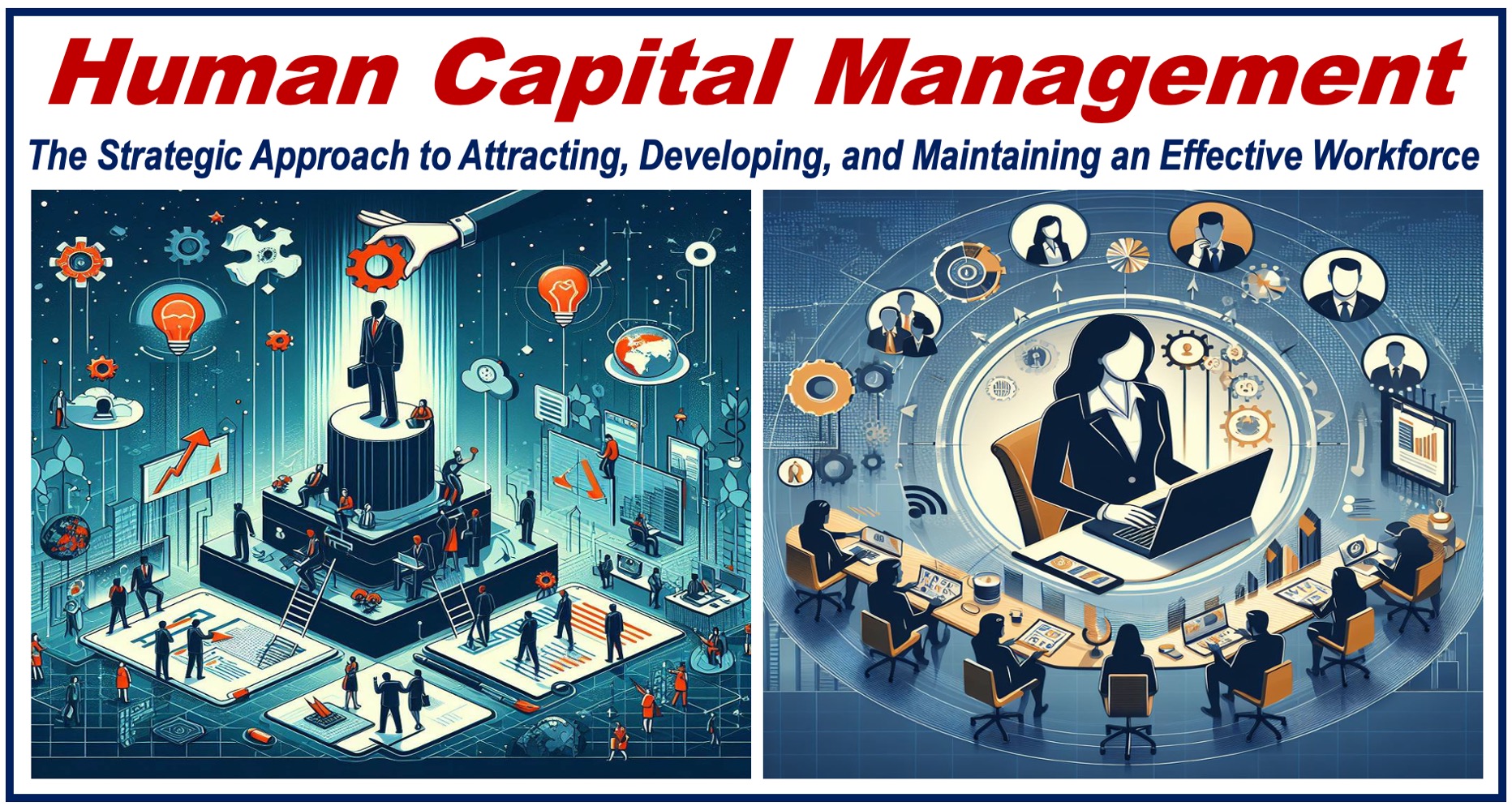Human Capital Management (HCM) is a comprehensive approach that companies and other employers use to optimize the value of their employees. At its core, HCM is about treating employees as more than mere workers who perform tasks. They are seen as valuable assets that contribute to the success of the business.
This concept covers a wide range of functions, from hiring and training to managing and retaining employees.
Emeritus.org has the following definition of Human Capital Management:
“Human capital management is a strategic approach that aims to maximize the value of an organization’s human capital. The main goal is to foster professional growth and development by creating a positive work environment that attracts and retains talented employees.”
What is Human Capital?
The term “Human Capital” refers to the production factors we use to make goods and perform services that come from humans. Our skills, knowledge, personality, and social attributes all form part of the human capital that contributes to the creation of products and services.
In another article on this website, we wrote:
“Human capital is the collection of all our resources. It comprises all our knowledge, abilities, talents, skills, intelligence, training, judgment, and experience. It also includes our wisdom, individually, and collectively.”
“Human capital also refers to the value of a person for a company. Specifically their value regarding being able to produce goods or provide services during the time span of their career.”
Aims of Human Capital Management
Human Capital Management aims to improve business performance by finding ways to manage the organization’s workforce better.
It involves making sure that the right people are in the right roles, have adequate training, and are motivated towards the company’s goals and objectives.

Human Capital Management Components
This process includes several key components:
-
Recruitment and Hiring
The first step in building a strong workforce is recruiting the right people. It is not just a question of filling vacant positions but finding individuals who fit the company’s culture and long-term goals.
-
Training and Development
In today’s fiercely competitive and rapidly changing marketplace, successful companies provide employees with continuous learning opportunities so that they can grow their skills and advance their career prospects within the company.
Both the employees and the employer benefit. Staff members gain valuable skills, and the company becomes more innovative and competitive.
-
Performance Management
As an employer, you must set clear expectations, evaluate employee performance against these benchmarks, and provide feedback to encourage improvement.
Performance management is about ensuring your employees know exactly what is expected of them and helping them succeed.
-
Compensation and Benefits
Fair and competitive pay, along with benefits such as health insurance and retirement plans, are crucial if you want to attract and retain top talent. They are also important to remain competitive in your industry.
-
Workforce Planning
This is all about forecasting your company’s future requirements in terms of the size and skills of your workforce.
It ensures that your business can meet its objectives without facing talent shortages or surpluses.
Conclusion
Human Capital Management is a vital strategy for an organization that strives to maximize its success through its people.
This multifaceted approach goes far beyond basic personnel management. It incorporates strategies that foster a thriving, motivated, engaged, and skilled workforce.
By investing in your employees, you can build a strong, sustainable foundation for growth and competitiveness.
Video – What is Human Capital?
This interesting video presentation, from our YouTube partner channel – Marketing Business Network, explains what ‘Human Capital’ is using simple and easy-to-understand language and examples.
